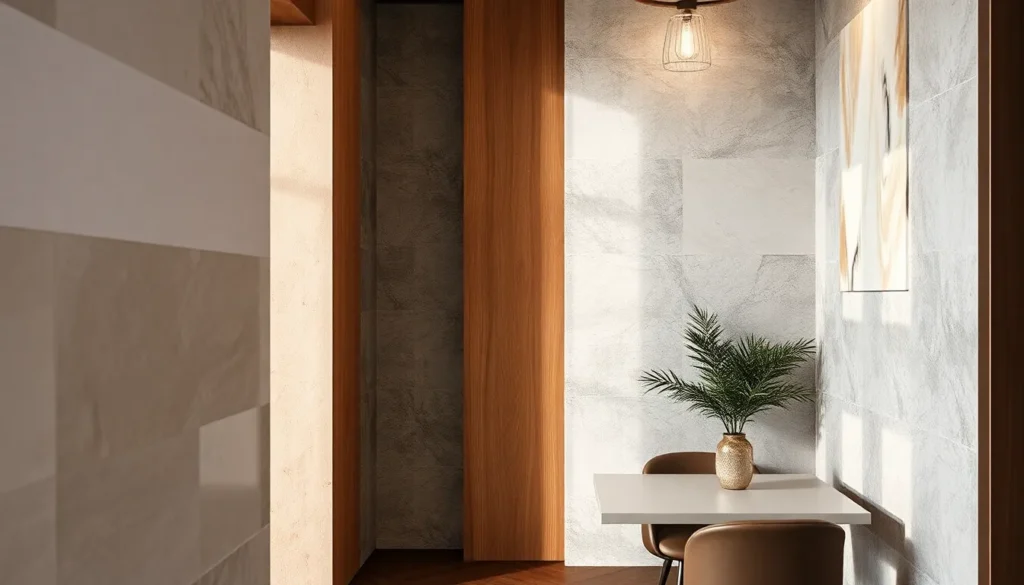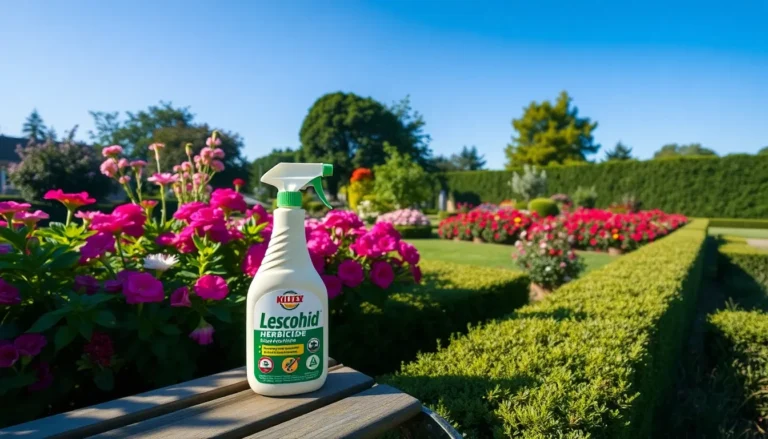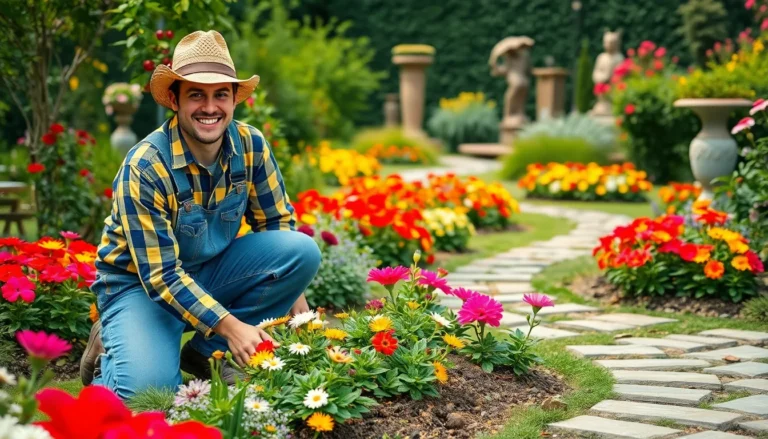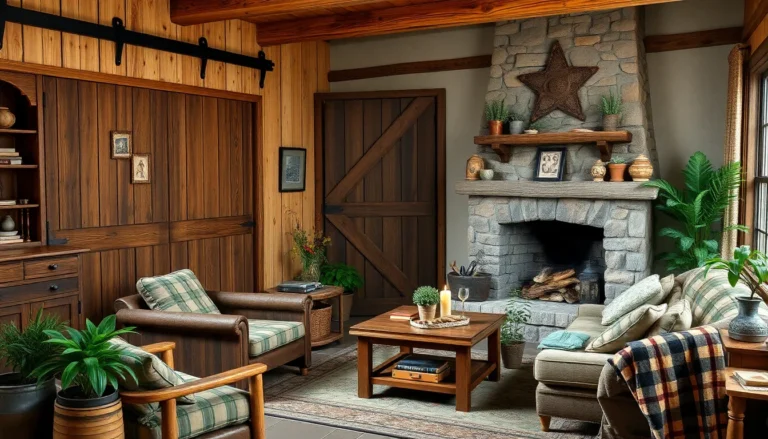Table of Contents
ToggleWhen it comes to interior design, walls often get a bad rap. They’re just there to hold up the ceiling, right? Think again! Wall textures can transform a dull space into a vibrant masterpiece. Whether it’s a cozy cottage vibe or a sleek modern look, the right texture can set the mood faster than you can say “paint swatch.”
Overview of Wall Textures
Wall textures play a crucial role in the overall aesthetic of interior spaces. Different textures can evoke specific feelings and set the mood within a room. A smooth finish often creates a modern and sleek environment, while a rough or patterned texture adds warmth and character.
Common wall textures include stucco, which offers a rustic appearance, and knockdown, often used in contemporary designs. Each texture provides unique benefits; for instance, textured walls can hide imperfections, while smooth finishes facilitate easier cleaning.
Designers frequently utilize wall textures to add depth and interest to their projects. Using multiple textures in a single space creates visual contrast, enhancing the overall design. Accent walls serve as excellent opportunities to experiment with bold textures, highlighting specific areas without overwhelming the entire room.
Materials play a significant role in the choice of texture. Paint, plaster, and wallpaper offer various options, each contributing distinctive qualities. Choosing the right material ensures the desired effect aligns with the room’s functions, whether it’s for relaxation or entertainment.
Incorporating wall textures into a design scheme requires careful consideration. Designers often assess the size of the room and the amount of natural light present. This evaluation informs decisions about which textures enhance or diminish the sense of space.
Ultimately, wall textures serve as a vital design element, transforming standard walls into striking features. By selecting the appropriate textures, individuals can elevate their living or working environment dramatically.
Types of Wall Textures

Wall textures come in various forms and significantly enhance interior aesthetics. Understanding these types can help individuals make informed decisions when designing their spaces.
Smooth Finishes
Smooth finishes create a sleek, modern look. They often use techniques like sanding and applying multiple layers of paint or plaster. Using a smooth texture can reflect light, making a room feel larger and more open. This type is ideal for contemporary designs where minimalism is key. Homeowners might choose smooth finishes for areas that require a polished appearance, such as living rooms or formal dining spaces.
Textured Finishes
Textured finishes add depth and character to walls. Techniques like stucco, knockdown, and sponge painting create rich surfaces that captivate the eye. By using textured finishes, designers can hide imperfections in walls while adding visual interest. These textures often evoke warmth and coziness, making them suitable for bedrooms or family areas. Varieties like raised patterns or rough surfaces can turn a basic wall into a stunning focal point.
Natural Materials
Natural materials offer a unique approach to wall textures. Options include wood paneling, stone, or clay plaster, which bring an organic feel to space. Incorporating these materials fosters a connection with nature and adds authenticity to the design. Many choose natural materials for rustic or earthy themes, often enhancing the environmental vibe of a home. The use of these textures can vary significantly, depending on the desired style and functionality of the space.
Application Techniques
Applying wall textures involves techniques that enhance a room’s ambiance. Proper methods lead to stunning finishes, whether someone chooses DIY options or hires professionals.
DIY Methods
DIY methods often appeal to those looking to personalize their spaces. Start by preparing the surface since a clean, smooth foundation ensures better texture adhesion. Choose from various application techniques like sponge painting, stenciling, or using a roller for knockdown textures. Use painter’s tape to protect areas meant to stay smooth or untextured. In addition, experimenting with colors can yield unique results. Successful DIY projects depend on patience and practice, allowing for mistakes that contribute to a one-of-a-kind look.
Professional Installation
Professional installation offers expertise and high-quality results. Professionals evaluate the space, recommend suitable materials, and prepare surfaces before applying textures, ensuring a flawless finish. Utilizing techniques such as spray or trowel application, they create intricate patterns or smooth finishes based on the design vision. Furthermore, professional installations often include specialized tools, ensuring that textures adhere properly and last longer. Combining knowledge and experience, experts help achieve results that elevate the overall aesthetic of any space.
Choosing the Right Wall Texture
Selecting the appropriate wall texture enhances a room’s atmosphere and function. Factors like space purpose and overall design style influence this choice significantly.
Considerations for Different Spaces
Room size and lighting directly affect texture choice. Large spaces can accommodate bold, textured finishes that create visual interest. Conversely, small areas benefit from smooth textures that reflect light and make the space feel larger. High-traffic areas require durable textures, like knockdown, which withstand wear and tear. For relaxing rooms, such as bedrooms, softer textures contribute to a cozy ambiance. Moreover, kitchens and bathrooms influence the choice of moisture-resistant materials, ensuring longevity and ease of cleaning.
Complementing Interior Design Styles
Design styles dictate the most suitable wall textures. Minimalist spaces favor smooth finishes for a clean appearance. Traditional homes often incorporate textured finishes like wainscoting or stucco that add depth and warmth. Rustic styles, characterized by natural materials, thrive on rough textures such as reclaimed wood or stone. Contemporary designs may blend various textures to create striking contrasts and diverse visual experiences. Each texture aligns with specific themes, allowing each room to resonate with its intended atmosphere, enhancing overall cohesion throughout the home.
Maintenance and Care
Maintaining wall textures ensures their longevity and appeal. Regular cleaning eliminates dust and grime that can dull the finish. Use a soft cloth or vacuum with a brush attachment to gently remove dirt without damaging the texture.
Protecting surfaces from moisture is crucial, especially for textured finishes like stucco, which can absorb water. Always address leaks or spills immediately to prevent mold and mildew. Regular inspections of high-traffic areas help identify wear and tear early.
When it comes to touch-ups, the approach varies by texture. Smooth finishes require precise matching of paint, while textured surfaces may need a combination of techniques for seamless repairs. For example, a sponge application can effectively mimic bases on textured finishes.
Preventive measures enhance the durability of wall textures. Applying a protective sealant every few years aids in resisting stains and moisture. Be sure to choose a sealant compatible with the specific texture for optimal results.
In spaces with significant sunlight exposure, fading can occur over time. Using window treatments helps mitigate this issue, preserving color and texture integrity. For areas prone to heavy use, consider durable materials that withstand scrapes and scratches.
Transforming wall textures demands care and attention. Regular maintenance allows spaces to maintain their intended aesthetic and functional appeal. Taking these steps fosters an environment that continues to impress and inspire.
Wall textures play a pivotal role in shaping the atmosphere of any space. By thoughtfully selecting and applying various textures, one can create a unique environment that reflects personal style and enhances comfort. Whether opting for smooth finishes for a modern look or textured surfaces for warmth, the choices are endless.
Maintenance is equally important to ensure these textures remain vibrant and appealing over time. Regular care and attention to the specific needs of each texture type will keep walls looking their best. Ultimately, embracing wall textures not only elevates design aesthetics but also contributes to a more inviting and enjoyable living or working space.








